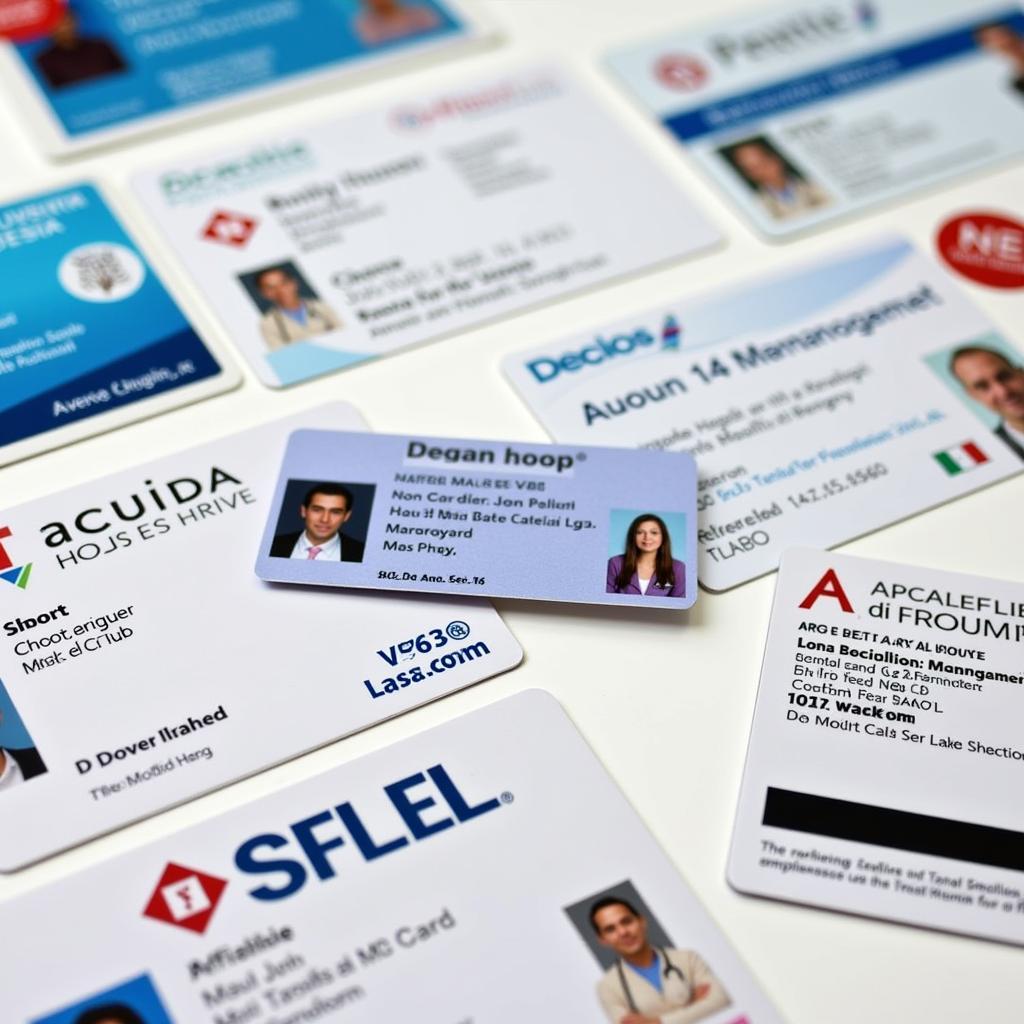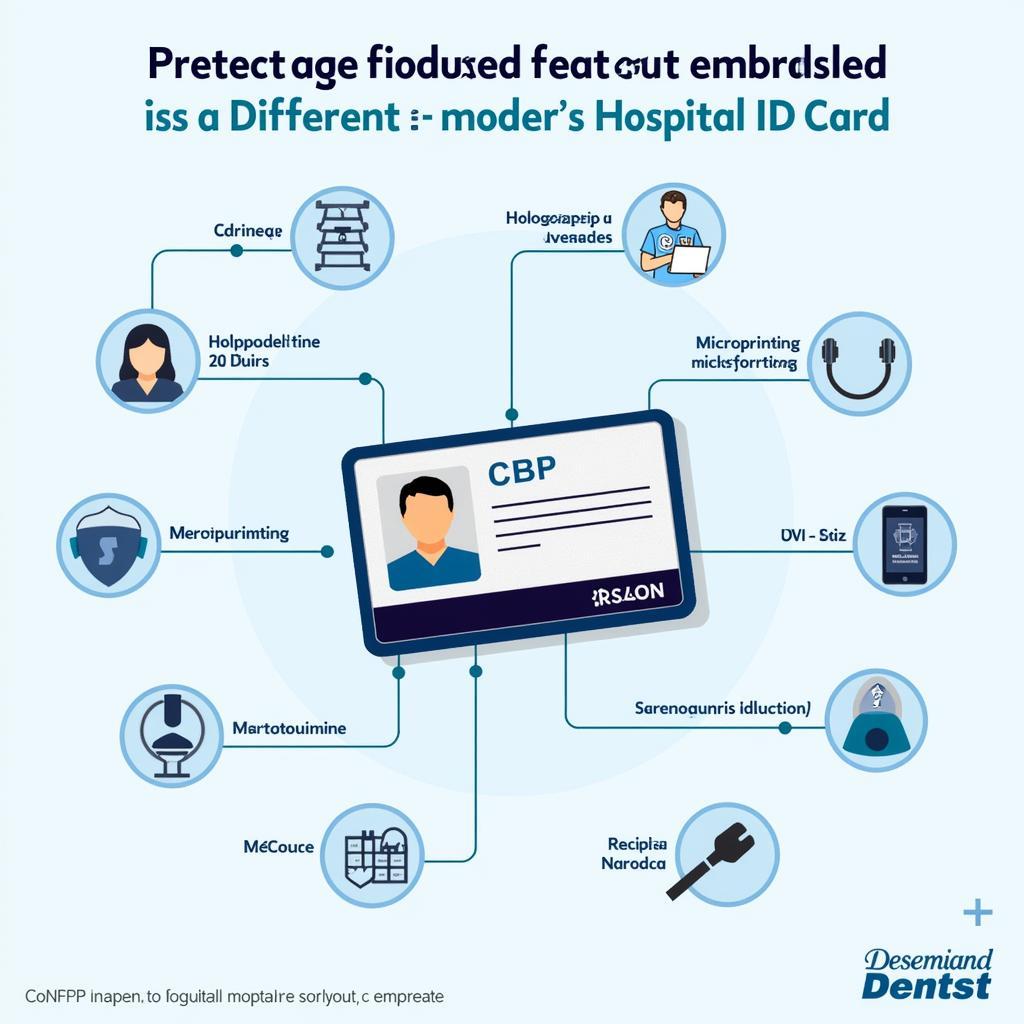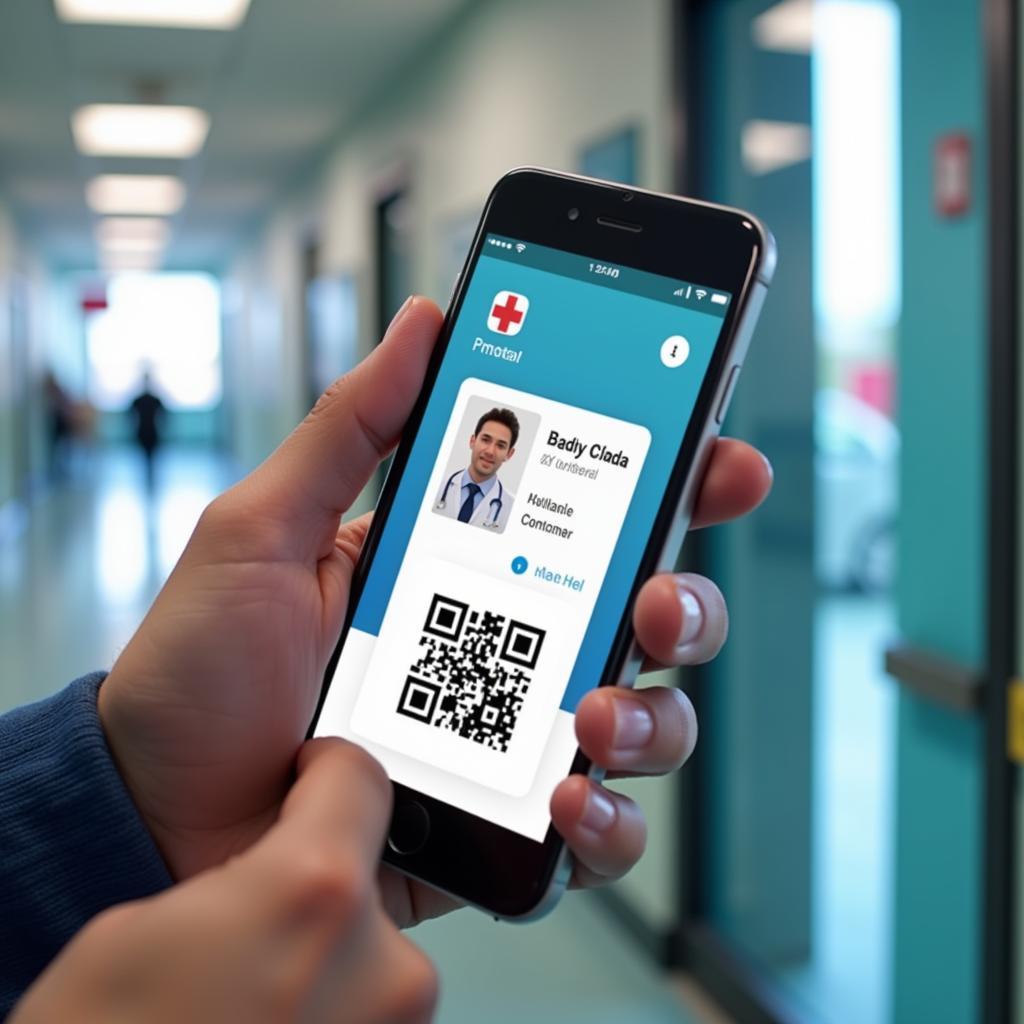Hospital ID cards are essential for maintaining security and efficiency within the healthcare environment. Whether you’re a patient, visitor, or staff member, understanding the purpose and format of these cards is crucial. This article delves into the world of Hospital Id Card Formats, exploring their components, benefits, and emerging trends.
 Hospital ID Card Examples
Hospital ID Card Examples
The Anatomy of a Hospital ID Card
A typical hospital ID card, often designed with specific software, contains key elements that help with identification and access control:
- Name and Photo: The most prominent features, enabling quick visual identification.
- Unique Identification Number: Every individual is assigned a unique ID number for efficient record-keeping and tracking.
- Job Title/Department (for Staff): This information helps identify staff roles and responsibilities.
- Barcode or Magnetic Stripe: These technologies enable quick and accurate data reading for access control and attendance purposes.
- Hospital Logo and Branding: Reinforces the hospital’s identity and adds a visual element to the card.
 Hospital ID Card Security Features
Hospital ID Card Security Features
The Importance of Hospital ID Cards
Hospital ID cards play a critical role in ensuring a secure and well-organized environment:
- Patient Safety: Accurate patient identification is paramount for avoiding medical errors and ensuring the right treatment is administered.
- Access Control: ID cards restrict access to authorized areas, maintaining security for staff, patients, and visitors.
- Time and Attendance Tracking: For staff, ID cards can be integrated with timekeeping systems for efficient payroll and scheduling.
- Emergency Response: In critical situations, ID cards provide vital information about an individual’s identity and medical needs.
- Enhanced Professionalism: ID cards contribute to a professional image for the hospital and its staff.
Evolving Trends in Hospital ID Card Format
The landscape of hospital ID card formats is continuously evolving with technological advancements:
- Smart Cards: Integrating RFID or NFC technology allows for contactless access control, secure data storage, and potential integration with electronic health records (EHRs).
- Biometric Authentication: Fingerprint or iris scanning adds an extra layer of security by verifying identity based on unique biological characteristics.
- Mobile Credentials: Digital ID cards stored on smartphones provide a convenient and portable alternative to physical cards.
 Digital Hospital ID Card on Smartphone
Digital Hospital ID Card on Smartphone
FAQs about Hospital ID Card Format
What information do I need to provide to get a hospital ID card?
Typically, you’ll need to provide your full name, date of birth, photo, and any other information required by the hospital’s specific ID card policy.
How long is a hospital ID card valid?
The validity period varies depending on the hospital’s policies. Staff ID cards might need annual renewal, while patient ID cards might be valid for the duration of their treatment.
Can I use my hospital ID card at other hospitals?
No, hospital ID cards are generally specific to the issuing institution and are not transferable.
What should I do if I lose my hospital ID card?
Report the loss to the hospital’s security office or designated personnel immediately to deactivate the card and prevent unauthorized use.
Need More Information?
For inquiries about San Jose Hospital’s ID card policy or other services, please contact:
Phone Number: 02437655121
Email: [email protected]
Address: No. 298 Cau Dien Street, Minh Khai, Bac Tu Liem, Hanoi, Vietnam.
Our dedicated customer support team is available 24/7 to assist you. For further details about visitor policies at specific hospitals, you can explore resources like Huntsville Hospital visitor parking, which offers practical information for guests.